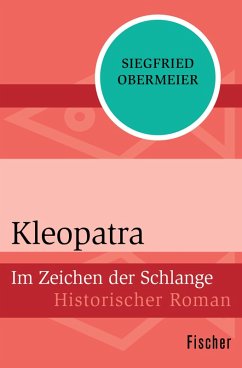
The Sun and the Moon of Alexandria (eBook, ePUB)
Versandkostenfrei!
Sofort per Download lieferbar
0,99 €
inkl. MwSt.
Weitere Ausgaben:

PAYBACK Punkte
0 °P sammeln!
Apollos, the main character of this story, is mentioned many times in the New Testament as an associate of St. Paul and a great teacher of the Christian faith. However, apart from indicating that he hailed from Alexandria, scarcely any information exists about the biography and background of this remarkable man. Some scholars even attribute to him the authorship of the anonymous Epistle to the Hebrews. Carte blanche is therefore provided for writing a fictional biography of Apollos. The author has been careful to provide Biblical references among the appendices at the end of the book to ensure...
Apollos, the main character of this story, is mentioned many times in the New Testament as an associate of St. Paul and a great teacher of the Christian faith. However, apart from indicating that he hailed from Alexandria, scarcely any information exists about the biography and background of this remarkable man. Some scholars even attribute to him the authorship of the anonymous Epistle to the Hebrews. Carte blanche is therefore provided for writing a fictional biography of Apollos. The author has been careful to provide Biblical references among the appendices at the end of the book to ensure that anything written about Apollos is at least consistent with the Biblical narrative.
Although handsome, articulate and clever, Apollos finds that his life lacks meaning. The gods that his parents worship seem silly to him. Under the influence of his tutor, Jerahmeel, he becomes a Jew. Later, after travels to his Greek homeland, to Jerusalem, Antioch and Corinth, Apollos converts to Christianity. In Alexandria, he has been friendly with two sisters, Demeter and Diana. Demeter, whom he loves, marries a Roman official and leaves for the Imperial capital and social success. Riots in Alexandria and the murder of her parents cause the thoughtful Diana, already a Christian, to move to Ephesus. The trio lose touch but eventually, Diana meets and marries Apollos and helps him with his work in the new church at Corinth. The two sisters are reunited many years later to finally part in the blood stained sand of the amphitheatre at Nimes. The story which reflects the exhilaration and persecution that were part of the early church is interwoven with expositions of Christian belief. The real life Apollos, as in this story, had to be instructed by Priscilla and Aquila about the Holy Spirit. Readers can match Apollos' growth in understanding with their own.
Included in the appendices are maps of places Apollos visited in his travels. These are based on the maps in Ronald Brownrigg's book, 'Pauline Places'. The additional details shown on these maps, related to Apollos' visits, are of course fictitious.
Although handsome, articulate and clever, Apollos finds that his life lacks meaning. The gods that his parents worship seem silly to him. Under the influence of his tutor, Jerahmeel, he becomes a Jew. Later, after travels to his Greek homeland, to Jerusalem, Antioch and Corinth, Apollos converts to Christianity. In Alexandria, he has been friendly with two sisters, Demeter and Diana. Demeter, whom he loves, marries a Roman official and leaves for the Imperial capital and social success. Riots in Alexandria and the murder of her parents cause the thoughtful Diana, already a Christian, to move to Ephesus. The trio lose touch but eventually, Diana meets and marries Apollos and helps him with his work in the new church at Corinth. The two sisters are reunited many years later to finally part in the blood stained sand of the amphitheatre at Nimes. The story which reflects the exhilaration and persecution that were part of the early church is interwoven with expositions of Christian belief. The real life Apollos, as in this story, had to be instructed by Priscilla and Aquila about the Holy Spirit. Readers can match Apollos' growth in understanding with their own.
Included in the appendices are maps of places Apollos visited in his travels. These are based on the maps in Ronald Brownrigg's book, 'Pauline Places'. The additional details shown on these maps, related to Apollos' visits, are of course fictitious.
Dieser Download kann aus rechtlichen Gründen nur mit Rechnungsadresse in A, D ausgeliefert werden.













